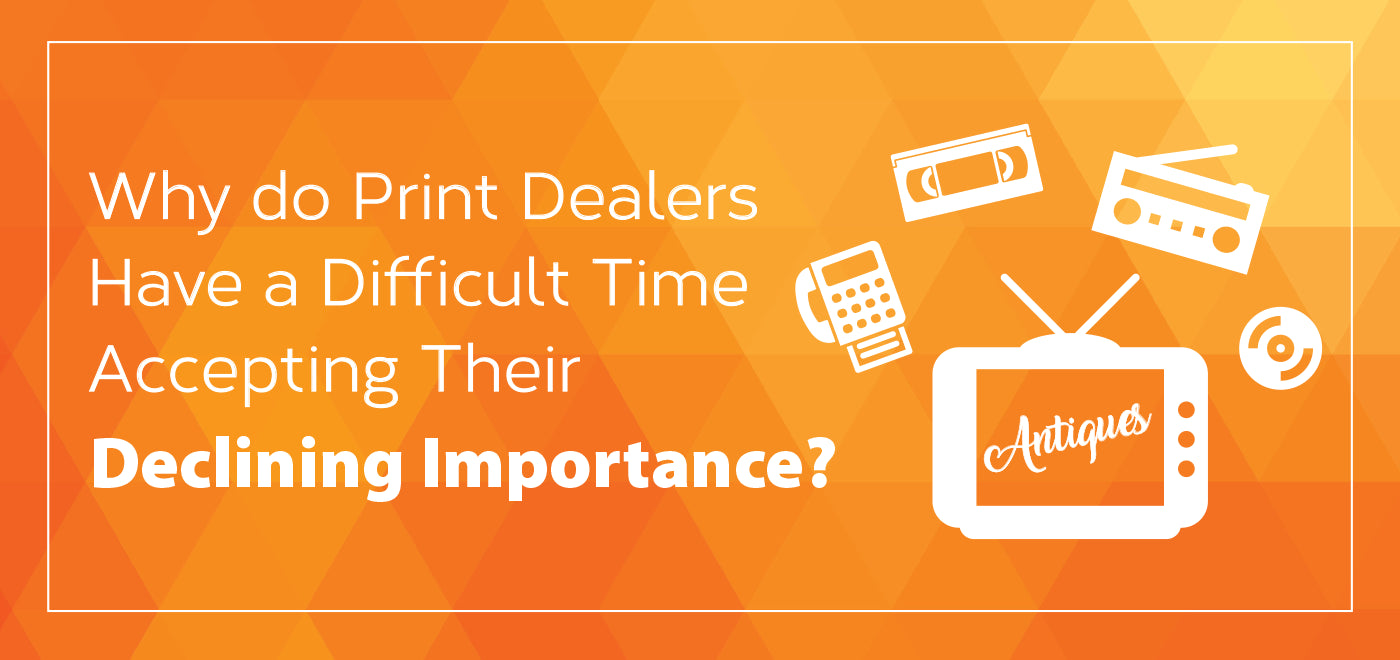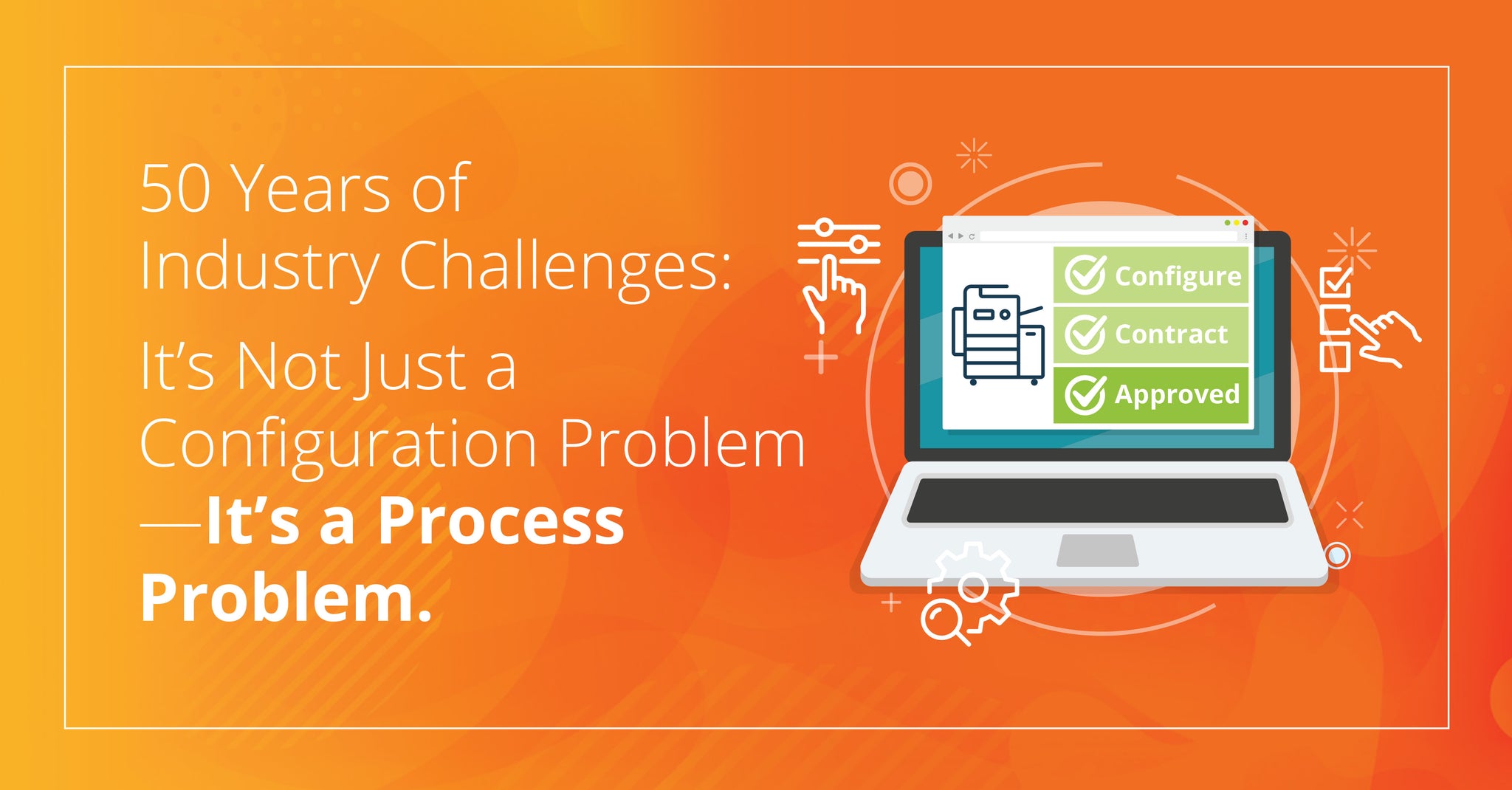
At this point in the office printing lifecycle, the only group that seems to be in denial about the reduction in pages are dealerships. If it were not such a serious issue it would be comical, but you need to confront the issue and develop a strategy to replace the decline in revenue, before it threatens your business. All industries change over time, the rate of change and direction (increase or decline) are the variables. Right now we are in a period of steady rapid decline of page volumes and the technology significance of office printing. It’s okay that you don’t believe me. I know it’s because psychology is conspiring against you.

FACT: office printing declined over 15% in key verticals between 2015 and 2016. I don’t know what 2017 will be, but there’s no reason to think that percentage rebounded. How does that number make you feel?
Your first reaction is likely disbelief: 15% is huge and it’s far beyond what I’ve ever seen. That reaction is known as Cognitive Dissonance. When you have a long held belief (‘office printing is important and growing, maybe it’s flat-ish…’) and someone presents you with a fact that counters that belief, (‘office printing is in double-digit annual decline’), you reject it. Humans have a deep-rooted trait to reject new ideas that challenges beliefs. This trait has actually helped us survive and evolve. People write books about this stuff and the human nature of rejecting ideas that make us uncomfortable. If you sell office printing equipment, a rapid decline in page volume surely constitutes an uncomfortable thought.
What would you do next? Look for some data to refute that 15% decline? You’d likely consider how your numbers compare to that percentage. Surely you can find some statistics that would confirm your belief that print is not in double-digit decline. Further research into this would be based upon you dismissing the 15% decline and viewing it as incorrect. That reaction is called Confirmation Bias. You search for data to prove your position, not to explore if a data point is valid. In this case, the Print Audit data set is likely quite a bit bigger than any one dealer has, and it’s more diverse— industry, geography, customer size, etc. Since Print Audit software tracks usage per employee, it’s pretty darned accurate. Your data could in fact be growing. Perhaps you are pulling in more devices at your customer sites into your MPS program, or, maybe you won a few accounts last year. Maybe you opened another office or acquired a smaller company. Your numbers could be going up, but have you looked at accounts where you track users, and have done so for more than a year? Confirmation bias also happens every day.
Another common trait in our industry is that we tend to get together in groups and discuss topics. Nothing strange here, right? We are an industry, and our threats and our opportunities tend to be similar. While it is a healthy practice to get together and share our thoughts, the risk is that we tend to fall into an alignment of thought with one another. Even if you are not sure about a particular strategy or idea (example: office print is in steep decline) you will tend to accept the wisdom of the crowd, over your own idea(s), which can be dangerous.
Right then, that’s a lot of psychology. Let’s explore why it matters to you.
Groups and pack mentality are the worst place to be when change occurs. Imagine for just a second that things were actually at the point of significant change. Every industry hits this tipping point. Imagine it’s 1999 and you are selling fax machines. Imagine it’s 2001 and you are a record label the year before Apple launches iTunes. Imagine you are iTunes and it’s 2013 when Spotify launched. Imagine it’s 2007 and you are a cable company before Netflix begins streaming content. My point is that established industries are the worst place to be when disruption occurs. They tend to hunker down and reject all rational data points that would cause them to change. The last few examples are important. Music and movies are more popular now than they ever have been. It’s just that certain segments of the business have been disintermediated (re: cut out!) of the value chain. We are not talking about office printing dying, we are talking about it declining. This is also a psychological trick: if you hold on to the idea that offices will never stop printing, then you can reject the 15% decline fact. Business as usual! But, if you ACCEPT that it is, indeed, in double-digit decline, then you need to address it through shifting your business focus.

Put aside your natural instinct to reject a statistic that is alarming. Don’t try to delegitimize it. Don’t ask the industry for their opinion. OEMs, software vendors, and consultants likely suffer from the same biases you do. A decline in volume means many customers will need less hardware. They will need smaller hardware. A common reaction I see to declining print is that dealers try to increase the complication of a sale by adding in document management, or security features, and then sell devices that enable that feature. Will it work? Not for most accounts. A small business just needs to print. It’s a simple problem you have now made into a complicated problem. And by doing so you are now dealing with the customer’s psychology, and it’s tough to change their minds. They have their own versions of cognitive dissonance, confirmation biases, and pack mentality.
What’s the way forward for a dealership?
You need to make a calculated risk assessment. Which customers can you continue to sell A3 boxes like you always have? What products will you sell to customers whose page volumes and requirements fall below a threshold that requires A3? I have blogged about what that looks like. How will you make up the revenue and profit gap?

Your dealership cannot continue to rely on a 40-year-old lease, service, and replace model. A model that relies on pushing product in a world that has moved to pulling products.
Your local business has an excellent opportunity to grow, if it embraces a new model. If it acknowledges the business reality of lower page volumes.
- Focus on your existing customers
- Be the company that suggests smaller hardware like HP A4s
- Sell those customers additional hardware and services
- Make adjustments to your sales model
Point four is likely the most important. Get an online store. Develop a sales team that is more inside than outside. Develop a sales team that is closer to 25 years old than 50.
Office print volumes declined by 15% last year. Your move.


